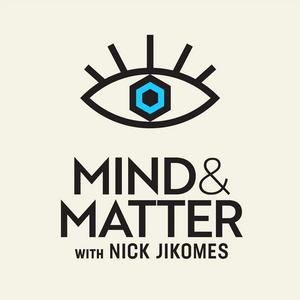Mitochondrial Transfer, Obesity & Immune-Metabolism Interactions | Jon Brestoff | 261
Send us a textHow mitochondria travel between cells and how this hidden communication shapes metabolism, immunity, and even potential therapies.Episode Summary: Dr. Jon Brestoff talks about mitochondrial dynamics inside cells, their transfer between unrelated cells (distinct from inheritance during division), and its roles in adipose tissue communication, macrophage cleanup, and systemic metabolic signaling; they explore how high-fat diets disrupt this process, potential hormetic benefits, therapeutic mitochondria transplantation for diseases like Leigh syndrome and obesity, and broader immunometabolism crosstalk.About the guest: Jon Brestoff, MD, PhD is an associate professor of pathology and immunology at Washington University School of Medicine in St. Louis, where he directs the Initiative for Immunometabolism.Discussion Points:Mitochondria per cell range from ~100-5000; they move via fusion/fission, vertical inheritance (cell division), or horizontal transfer without division.Transfer mechanisms: free release, extracellular vesicles, or tunneling nanotubes using cytoskeleton transport.In healthy fat tissue, adipocytes routinely donate mitochondria to macrophages for degradation (quality control); high-fat (lard-based, long-chain FA) diets block macrophage uptake, diverting mitochondria to other organs.Diverted mitochondria may induce “mito-hormesis” (mild oxidative stress boosting antioxidants) or signal adipocyte metabolic status inter-organ.Mitochondria transplantation shows promise in animal models for ischemia-reperfusion, obesity, and mitochondrial diseases.Immune cells prefer glycolysis but have low mitochondrial biomass; transplanted mitochondria tilt T-cells toward anti-inflammatory regulatory phenotype.Circulating cell-free mitochondria rival immune cell numbers.Obesity inflammation stems from dying oversized adipocytes releasing lipids/mitochondria, forming crown-like structures with pro-inflammatory macrophages.Leigh syndrome from genetic mutations disrupting the electron transport chain.Transfer may be an evolutionary relic of endosymbiosis; cells may selectively use exogenous mitochondria like a “generator” during metabolic crisis.Reference Paper:Study: The power and potential of mitochondria transferRelated Episode:Support the showAffiliates: Lumen device to optimize your metabolism for weight loss or athletic performance. Special sale Nov 10 - Dec 1: Lumen is half off ($599 → $299), and MINDMATTER gets another 15% off. AquaTru: Water filtration devices that remove microplastics, metals, bacteria, and more from your drinking water. Through link, get $100 off for AquaTru Carafe, Classic and Under the Sink Units, and $300 off Freestanding models. Seed Oil Scout: Find restaurants with seed oil-free options, scan food products to see what they’re hiding, with this easy-to-use mobile app. KetoCitra—Ketone body BHB + electrolytes formulated for kidney health. Use code MIND20 for 20% off any subscription (cancel anytime) For all the ways you can support my efforts


